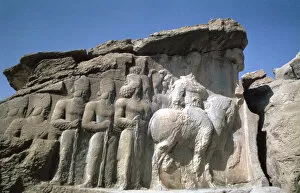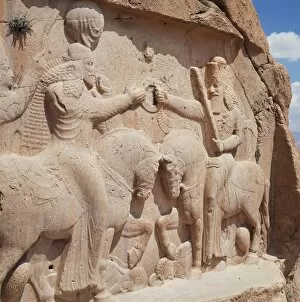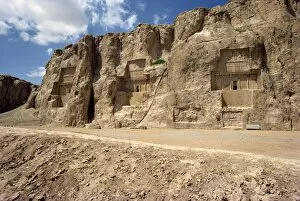Naqsh I Rustam Collection
"Naqsh-i-Rustam: A Glimpse into Ancient Persian Glory" Step back in time and witness the triumphs of Shapur I, as you explore the captivating reliefs at Naqsh-i-Rustam
All Professionally Made to Order for Quick Shipping
"Naqsh-i-Rustam: A Glimpse into Ancient Persian Glory" Step back in time and witness the triumphs of Shapur I, as you explore the captivating reliefs at Naqsh-i-Rustam, Iran. Marvel at the grandeur of his victory over Roman emperors, depicted in intricate detail on these ancient stone carvings. Immerse yourself in history as you stand before the relief of Shapur I's investiture, a powerful reminder of his ascension to greatness. The sheer artistry and craftsmanship showcased here will leave you awestruck. Discover the sacred Sasanian fire altar, an emblematic symbol of Zoroastrianism that once burned with fervent devotion. Let its significance transport you to a time when faith played a pivotal role in shaping civilizations. Pay homage to Xerxes I and Artaxerxes I as their majestic tombs rise proudly from the rocky landscape. These monumental structures serve as lasting tributes to their reigns and offer glimpses into their legacies. Uncover the enigmatic Cube of Zoroaster (Ka ba Zardusht), where mysteries intertwine with religious beliefs. Its presence adds an air of mysticism to this already mesmerizing site, inviting contemplation and reflection. Finally, bear witness to Narse's investiture by Anahit – a divine moment captured forever on stone. This depiction serves as a testament to both power and spirituality intertwined within ancient Persian culture. Naqsh-i-Rustam stands not only as an archaeological wonder but also as a testament to human ingenuity throughout history. Explore its hallowed grounds and let your imagination soar amidst these timeless relics.















